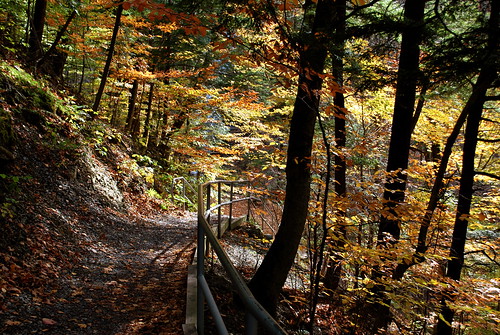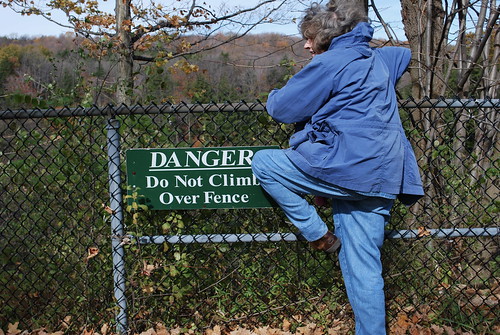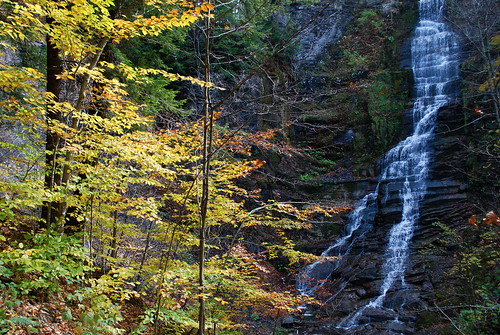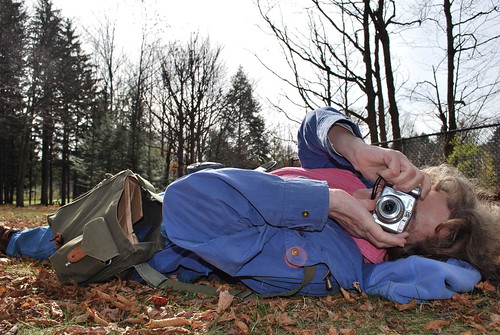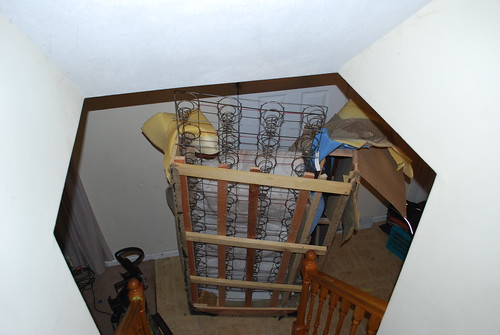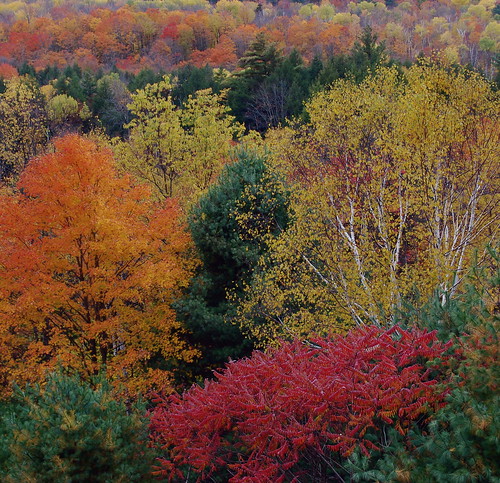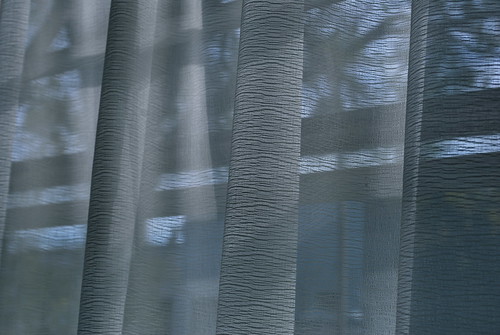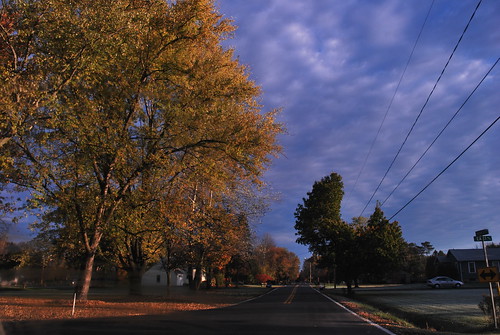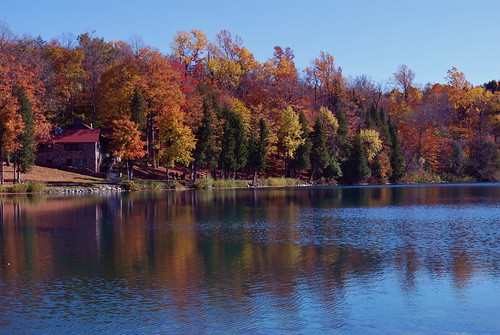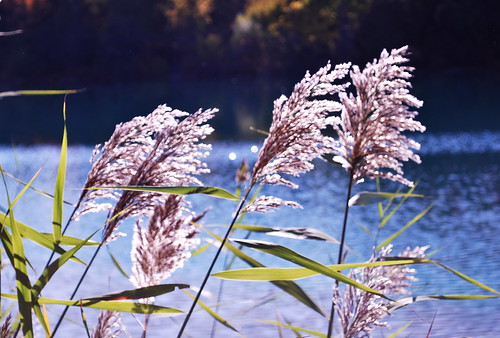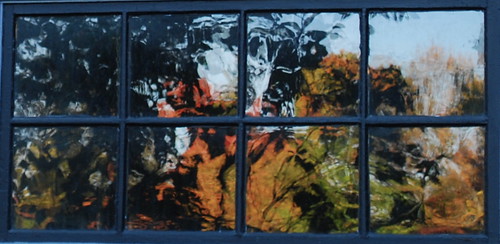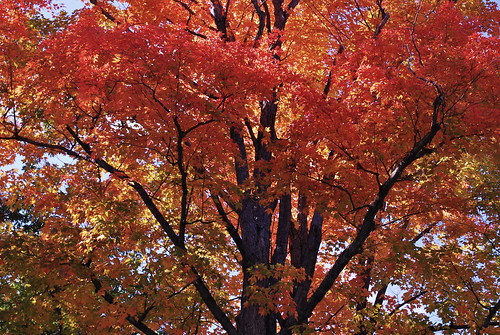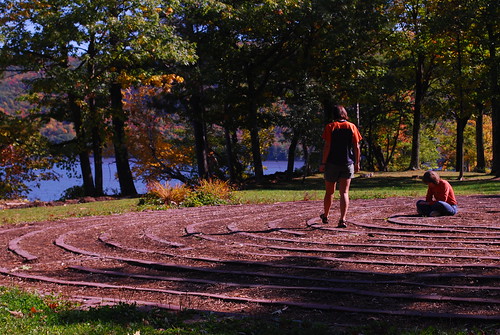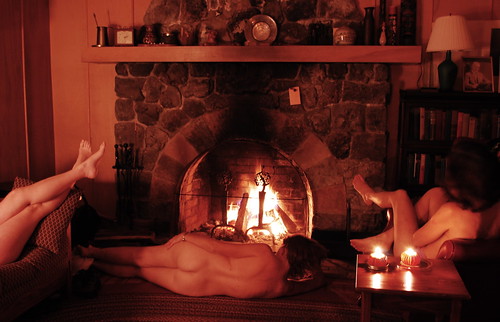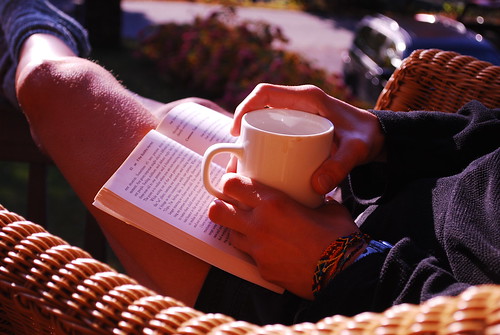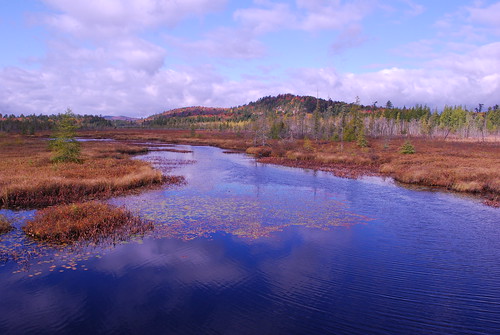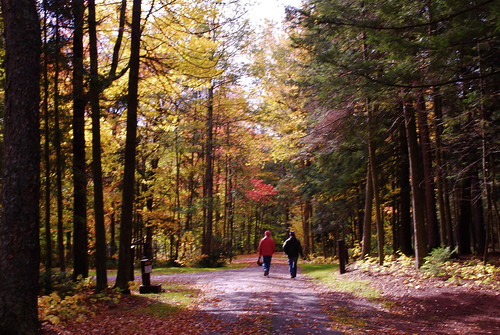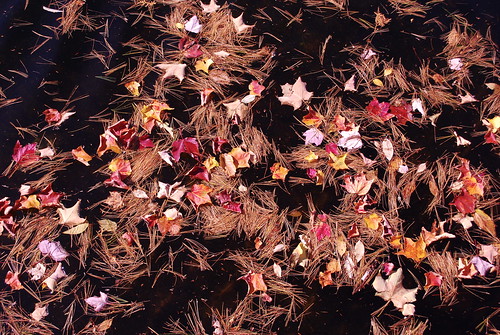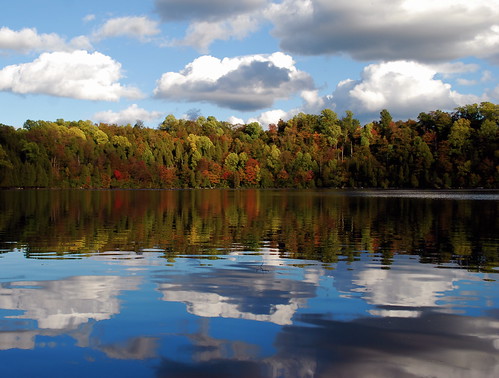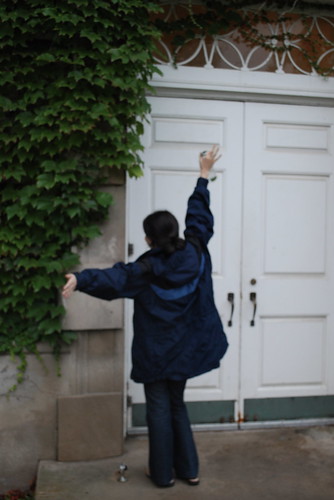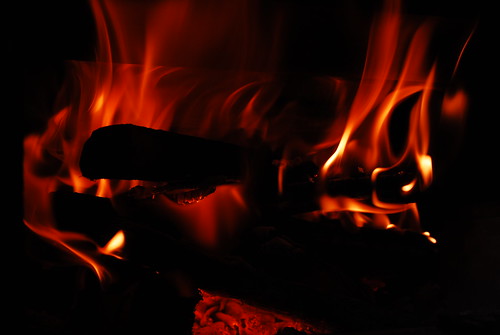When Aunt Seashell was dying, she talked often about childhood summers playing with her sister and her cousin at the shore. The landscape of Aunt Seashell's childhood, the beaches and ocean waves, the boardwalk with its splinters and the sandy porch with its wooden rocking chairs, the lunches of chicken noodle soup and pumpernickel bread, was more real to her than the cold winters here, where she'd been living for those last few years. The shore was still the place she felt most connected to, the landscape she held in her mind. I've heard that immigrants as they get older and nearer to death will begin talking about the landscape of their childhood, even if it's far across the ocean.
My earliest childhood memories include playing outside with my sisters, my brother, and Show-off Neighbor Boy. We'd pick wild strawberries, those tiny little berries, for hours in the hot sun in the field east of the house. We'd play in the old apple orchard, stepping across rotting fruit that squished under our feet and swinging up onto the low, crooked branches. The apples were small and blemished, but when you took a bite, the tartness was worth the risk of eating a worm. We'd picnic in the woods and fields, eating our peanut butter and jelly sandwiches on an old blanket and picking daisies to bring back for the vase on the kitchen table.
Outdoor Girl and I explored the woods when we were older, making a fort in two trees that were covered with vines. We'd grasp the vines with both hands and climb as high as we could, sometimes falling dramatically to the ground when a vine would rip away from the tangled web. We had a huge fight with Show-off Neighbor Boy when he threatened to chop one of the trees down, saying that it was on his parents' land.
During the years when we kept a horse behind the house, we'd take turns galloping across the big meadow, on the hard path that ran between chest-high grasses. We shared the land with other creatures, of course. From my bedroom window, I could see white-tailed deer, grazing in the early morning. The raccoons and rabbits made themselves known in the garden, and the snakes loved to curl up on the manure pile to warm themselves.
I didn't move away from that landscape: I live only a few miles from the house where my parents live. My father still wakes up early each morning to take a walk, and he'll take photos to send over the family email list. And yet, though I still live here, the landscape of my childhood exists now mostly only in memories. It's disappeared gradually, one field or grove of trees at a time.
The process is sadly familiar. First, come the wooden stakes with the pink or orange surveyor ribbons. Next comes the equipment, big yellow machines, roaring so loud that conversation with the humans atop them is quite impossible. Then comes the muddy road, the fallen trees. The building begins, an office building usually. Soon the land is paved over, covered with asphalt and parked cars, or perhaps a smooth green lawn with no wildflowers at all.
The fields where I picked wild strawberries disappeared under a highway, a road that came so close to my parents' house that the state need to seize some of their land. The mountain of dirt, higher than the house even, separated us from our neighbors on the other end of our rural road; we kids never really saw those neighbor kids again. The meadow where we rode our horse holds an office park now, buildings filled with shiny windows and parking lots filled with cars. The highest hill near us was sliced, made smaller, to accommodate a new wide road for an auto parts plant. The trees near the corner were cut down to make room for a convenience store, where workers from the auto parts plant eat their lunch. The field where we used to cross-country ski, stopping in the old barn to rest and eat oranges, is a neatly mowed lawn now, with square buildings and a long paved parking lot. The marsh that lay below the FamilyofEight's house was filled in for a mall.
Bit by bit, the wild fringes of land, the pieces left between the developed areas, are shrinking. Friday, my father went for his morning walk, hoping to walk through the trails that wound through the old apple orchard, the overgrown field that was left. Instead, he found surveyor sticks, a muddy road, and a huge clearing. The trees had been bulldozed, left in piles. Yellow equipment stood by the road, waiting. The worst part, for my father, was seeing in the mud the tracks of the deer and fawn he'd been watching for the last few weeks. "Where will they go now?" he asked.
I wonder when I come to die, what stories I will tell my grandchildren about the landscape of my childhood. Perhaps I'll tell them about picking wild strawberries, that frustratingly tedious search for bits of sweetness. Perhaps I'll talk about galloping a horse across a wild meadow or cross-country skiing through the woods. But I won't be talking about a landscape far across the ocean or in another state. I'll be describing the landscape of Snowstorm Region, where I still live. And yet, most of it is already gone.



